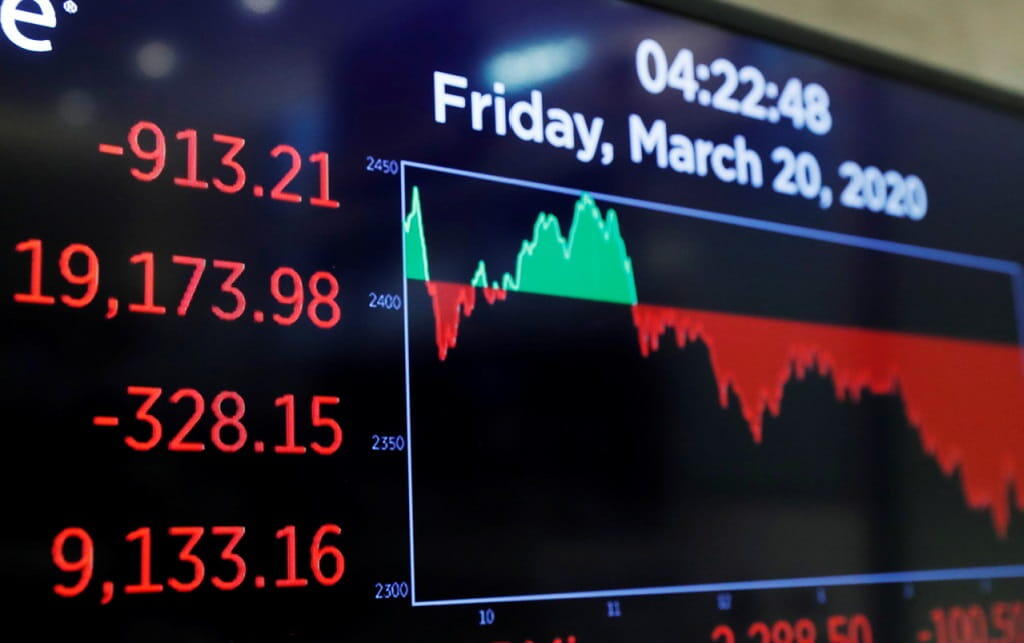Preventing the collapse of the health care system, most states have closed borders and quarantined citizens, but this measure led to the largest collapse in global GDP and a rise in global debt. With what baggage of economic problems did the world enter the third decade of the 21st century, and what are the prospects for this year? Let's summarize.

Quarantine 2020 lead to World's Largest GDP Collapse, photo WEB
In short, in 2020, the global economic recession caused by the pandemic was 4.3% - this is the figure given by the authors of the report of the UN Conference on Trade and Development. However, they also predict economic growth by 4.1% already in 2021.
At the same time, in the current conditions, developed countries will feel the consequences of the crisis much more strongly than developing countries, and about 130 million people may find themselves below the poverty line if the crisis drags on ... However, there is no need to panic in advance - experts believe that the process of global economic recovery will begin in spring.

The global economy fell by 4.3%, photo © UNCTAD
But so far the state of affairs is far from optimistic. Thus, the International Energy Agency reports that the drop in world oil demand in the past year amounted to almost 9 mb / d, as a result of which there is now an excess of more than 13 mb / d on the world market of "black gold". Also in 2020, the demand for coal fell by 7% and gas by 3%. Only the market for renewable energy sources experienced some recovery in the coronavirus year - the demand for them increased by almost 1%.
In addition, against the background of the crisis, the currencies of many countries weakened, and, alas, the ruble was among the most "sagging" - minus 16%, compared to the beginning of 2020. The currencies of Brazil (22%) and Turkey (24%) are even worse off. However, by holding the positions of their currencies for several months of the pandemic, many developed countries have acquired problems for themselves.

The drop in global oil demand amounted to almost 9 mb / d, photo WEB
By making lockdowns, governments paid compensation to the population, supported the demand for products at the expense of budget funds and not only ... And everything would be fine, but such actions led to a rapid increase in global debt.
For example, the US debt amounted to almost 384% of GDP, Great Britain - 501%, and Japan - more than 630%. As a result, the world debt reached its historic maximum in the fall, exceeding the figure of 272 trillion. By the way, Russia's total debt has also grown significantly, but the previously formed "safety cushion" made it possible to keep it at a relatively low level of 144% of GDP. A tough financial policy, cost limitation and impressive financial reserves allowed Russia not to increase the catastrophic debt.

World debt exceeded 272 trillion. dollars, photo © AFP/© JUNG JEON-JE
The current crisis, which is unique in nature, has also caused a massive contraction in global trade. The IMF estimates the decline in its volume at 8%, despite the fact that in 2019 its growth was only 0.2%. The industry indicators began to show positive dynamics back in July, but in the near future, its recovery will be restrained by new waves of coronavirus.
It is noteworthy that the pandemic affected the industry much less - the global industrial index has been holding above the critical level of 50 points for five months.

The current crisis has caused a decrease in the volume of world trade, photo © innoagensy.ru
COVID-19 had a tangible impact on the authority of the dollar - during the pandemic, this currency lost investor confidence. In 2020, the United States began actively print money to support the American economy, which provoked a record weakening of the dollar in the world market. The European Central Bank pursued the same policy, and therefore investors immediately began to actively buy gold. The effect was not long in coming - already in August the price of gold also exceeded the historical maximum of $ 2,000 per troy ounce.
There is no universal way out of the crisis, therefore each government revises its budgetary and monetary policies in its own way, sometimes using completely new instruments. For example, Japan and Europe tested double rates, Switzerland undervalued the franc, developed countries supported the labor market, and developing countries - infrastructure ... However, experts are sure that no instrument will return large economies to pre-crisis levels before 2022.
And what will happen to the Russian economy in 2021? Experts predict economic growth at 3% and inflation slowdown to 3.5%. Vaccination will largely contribute to recovery - it will allow faster formation of herd immunity and weakening quarantine measures. However, all these positive changes should not be expected earlier than the third quarter of this year.





